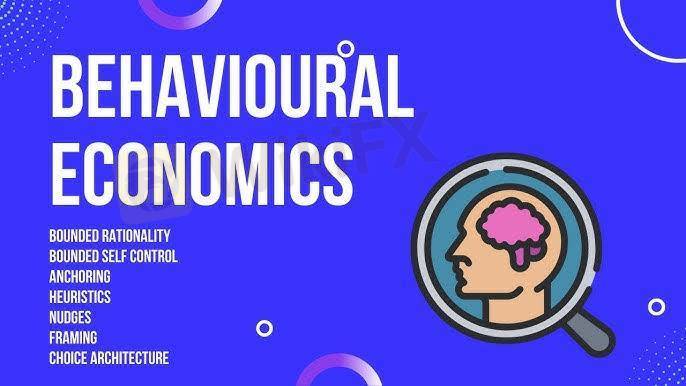
2025-02-12 16:35
業內Behavior economics: understanding consumer choices
#firstdealofthenewyearastylz
Behavioral Economics: Understanding Consumer Choices
Behavioral economics is the study of how psychological, emotional, and social factors influence consumer decision-making. Unlike traditional economics, which assumes people make rational choices based on perfect information, behavioral economics recognizes that consumers often make irrational decisions due to cognitive biases and heuristics (mental shortcuts).
Key Concepts in Behavioral Economics
1. Bounded Rationality – People have limited cognitive resources and time, leading them to make "good enough" rather than optimal decisions.
2. Loss Aversion – People fear losses more than they value equivalent gains (e.g., losing $100 feels worse than gaining $100 feels good).
3. Prospect Theory – Consumers evaluate potential gains and losses relative to a reference point rather than absolute outcomes.
4. Nudging – Small changes in how choices are presented can influence consumer behavior without restricting options (e.g., placing healthy foods at eye level in a store).
5. Anchoring Effect – People rely too much on the first piece of information they receive when making decisions (e.g., a high original price makes a discounted item seem like a better deal).
6. Social Proof – Consumers are influenced by what others are doing or buying (e.g., product reviews, testimonials).
7. Time Inconsistency – People tend to prefer immediate rewards over long-term benefits (e.g., choosing to eat junk food now despite wanting to be healthy later).
8. Default Bias – People tend to stick with pre-set options rather than actively making choices (e.g., automatic enrollment in retirement plans increases participation).
9. Framing Effect – How choices are presented affects decisions (e.g., "90% fat-free" sounds healthier than "10% fat").
Real-World Applications
Marketing & Advertising: Companies use behavioral insights to design persuasive ads, pricing strategies, and promotions.
Public Policy: Governments use nudges to encourage savings, healthier lifestyles, and environmental behaviors.
Retail & E-commerce: Online retailers leverage social proof, anchoring, and urgency tactics (e.g., "Only 2 left in stock!") to influence purchasing decisions.
Understanding behavioral economics helps businesses, policymakers, and consumers make better decisions by recognizing and counteracting biases.
贊 0
FX1618501564
交易者
熱門討論
業內
哎,现在明白不赌就是赢啊
行情分析
美元/加元技术面
技術指標
外汇技术分析之波浪理论
業內
[活動]論交易,贏取200元話費補貼
技術指標
EZ.Fury Kite是基于趋势指标MA进行判断
技術指標
指标派是什么?
市集分類

平臺

展會

代理商

招聘

EA

業內

行情

指標
Behavior economics: understanding consumer choices
 香港 | 2025-02-12 16:35
香港 | 2025-02-12 16:35#firstdealofthenewyearastylz
Behavioral Economics: Understanding Consumer Choices
Behavioral economics is the study of how psychological, emotional, and social factors influence consumer decision-making. Unlike traditional economics, which assumes people make rational choices based on perfect information, behavioral economics recognizes that consumers often make irrational decisions due to cognitive biases and heuristics (mental shortcuts).
Key Concepts in Behavioral Economics
1. Bounded Rationality – People have limited cognitive resources and time, leading them to make "good enough" rather than optimal decisions.
2. Loss Aversion – People fear losses more than they value equivalent gains (e.g., losing $100 feels worse than gaining $100 feels good).
3. Prospect Theory – Consumers evaluate potential gains and losses relative to a reference point rather than absolute outcomes.
4. Nudging – Small changes in how choices are presented can influence consumer behavior without restricting options (e.g., placing healthy foods at eye level in a store).
5. Anchoring Effect – People rely too much on the first piece of information they receive when making decisions (e.g., a high original price makes a discounted item seem like a better deal).
6. Social Proof – Consumers are influenced by what others are doing or buying (e.g., product reviews, testimonials).
7. Time Inconsistency – People tend to prefer immediate rewards over long-term benefits (e.g., choosing to eat junk food now despite wanting to be healthy later).
8. Default Bias – People tend to stick with pre-set options rather than actively making choices (e.g., automatic enrollment in retirement plans increases participation).
9. Framing Effect – How choices are presented affects decisions (e.g., "90% fat-free" sounds healthier than "10% fat").
Real-World Applications
Marketing & Advertising: Companies use behavioral insights to design persuasive ads, pricing strategies, and promotions.
Public Policy: Governments use nudges to encourage savings, healthier lifestyles, and environmental behaviors.
Retail & E-commerce: Online retailers leverage social proof, anchoring, and urgency tactics (e.g., "Only 2 left in stock!") to influence purchasing decisions.
Understanding behavioral economics helps businesses, policymakers, and consumers make better decisions by recognizing and counteracting biases.
贊 0
我也要評論
提問
0條評論

還沒人評論,趕緊搶佔沙發

提問
還沒人評論,趕緊搶佔沙發